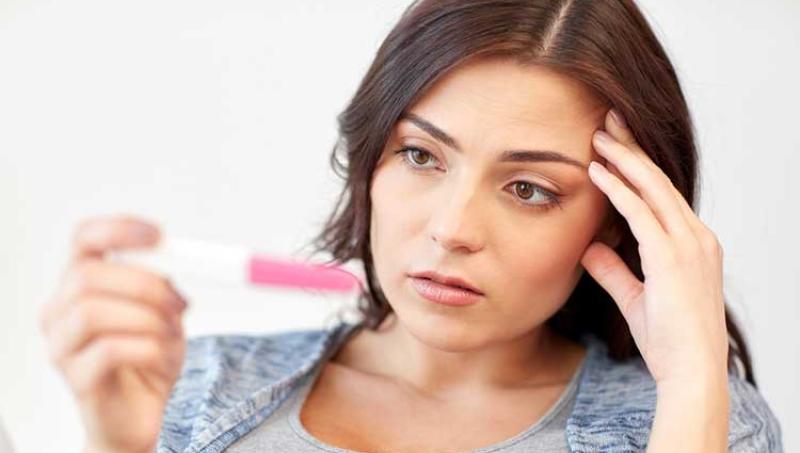Consult UAE's Leading Infertility Doctors in Dubai/Ajman
Infertility has been a global concern for years, although some regions over the globe especially South Asia, Middle East or North Africa, Central or Eastern Europe show a higher prevalence rate than others. Likewise, the cause of infertility also shows its diversity, when different regions are considered. If it is the advanced age of conception in Europeans; In African, it relates to the high degree of infection. Generally, the stress and strain of sedentary lifestyle and high-calorie food consumption have contributed to the increasing rate of infertility.
Definition– Infertility is the failure to conceive within one year of regular, unprotected coitus(contact).
Types(1) Primary Infertility – Patients who never conceived (2) Secondary Infertility – Patients who failed to conceive subsequently after an earlier pregnancy. This is mainly due to the infections which can lead to the tube blockage
For a woman to get pregnant:
(1) Her body must release an egg from one of her ovaries – ovulation should happen.
(2) Man’s sperm must join with the egg in the fallopian tube – fertilization should happen.
(3) The fertilized egg should go through the fallopian tube towards the uterus.
(4) Fertilized egg must attach to the inside of uterus – implantation
Infertility may happen from a problem with any or several of these steps.
Kottakkal Ayurveda is a center for Ayurvedic massage, treatment, healing, herbal medicine, and lifestyle practices. Our team of dedicated Ayurveda practitioners, trained in the art of Ayurveda are here to support your transformation and wellbeing. Kottakkal Ayurvedic Treatment Centre is the premier provider of Ayurvedic services in Dubai (Deira, Satwa), Ajman and we’re excited to share these restorative techniques with you.
Ovulatory defects:
It is the most common cause of female infertility.
Ovulatory dysfunction observed in (1) Hyper/Hypothyroidism (2)
Hyperprolactinemia (3) PCOD (4) Eating disorders – Anorexia and Bulimia (5) Exercise (Observed in athletes)
If ovulation is taking place – these features will probably be present (1) mid menstrual bleeding (2) mid menstrual excessive mucosal discharge (3) features suggestive of premenstrual syndrome (Painful menstruation – primary dysmenorrhea)
Ovulation can be confirmed by USG
Treatment:
Ovulation Induction by drugs. Reduction of weight in obese PCOS patients is essential to have a good response to drug therapy even for ovulation induction. Reduction of weight facilitates spontaneous ovulation.
Ayurvedic approach:
PCOS: (1) Hormonal imbalance corrected by maintaining BMI through Udwarthana, Abhyanga, Avagaha-sweda. (2) PCOS is a condition where Kapha and Vata are vitiated causingAvarana to Pitha. So in the proliferative phase, Kaphavatahara treatment is given and Pitahara treatment in the secretory phase.
Hypothyroidism: (1) If clinical signs are minimum, TFT near normal to the moderate range – Ayurvedic medicines with lifestyle modification are advised. (2) If clinical signs are moderate, TFT moderates variation – Modern treatment + Ayurvedic support.(3) If more clinical signs, TFT wide variations – start with modern medicine, then give Ayurvedic support.
Line of treatment – Kaphahara
Lifestyle modifications with Upavasa, Yoga & Pranayama
Procedures: Udwarthana, Abhyanga, Avagaha-sweda
Hyperthyroidism: Line of Treatment – Pithahara (Snehana, Virechana)
Ayurvedic medicines are effective in a good number of cases when given alone, add effect with modern medicines also present.
Hypogonadotrophism (Low hormone levels) – Decreased level of hormones treated with Nasya.
Hyperprolactinemia– Kaphahara treatment given.
Tubal defect:
Obstruction of tubes are observed due to (1) Pelvic infection which cause Peritubal adhesion and endosalpingeal damage (2) Previous tubal surgery (3) Tubal endometrioses (4) Polyps/mucus debris (5) Tubal spasm
Tubal block found out by HSG, laparoscopy, etc..
Treatment
Laparoscopy in Modern medicine
Ayurvedic approach
Tubal block corrected by Snehana, Virechana, AvagahaSweda, Vasti, Utharavasti
Endometriosis: Utharavasti was found to be very effective.
Adenomyosis: Better prognosis. Utharavasti is the best treatment of choice. Dry and fired foods not to be taken. Proper exercise motivated. Encouraged to maintain normal BMI
Uterine Factors
Endometrium must be sufficiently receptive enough for effective medication and growth of the fertilized ovum
Factors hindering implantation are:
(1) Uterine hypoplasia – corrected by Nasya, Snehana, Utharavasthi
(2) Inadequate secretory endometrium
(3) Fibroid – In proliferative and early secretory phase – Lekhana, Chetana drugs are given
In the late secretory phase – Pitha sleshmahara drugs are given.
A balanced diet, an active relaxed, and healthy lifestyle are needed to get the maximum benefit from the medications and therapy.
 Ajman:052 6474941
Ajman:052 6474941  Dubai 055 3699446
Dubai 055 3699446 Satwa +971 55 610 3056
Satwa +971 55 610 3056 Sharjah +971 50 6545235
Sharjah +971 50 6545235 


